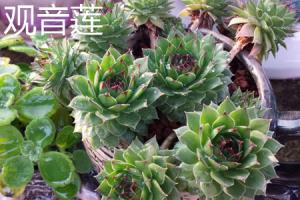How Big Do Cherry Tomato Plants Get?
Cherry tomatoes are a delicious and versatile fruit that can be grown at home with relative ease. Compared to full-size tomato plants, cherry tomato plants are known to produce more fruit per plant and require less space, making them a popular choice for home gardeners with limited space. But just how big do cherry tomato plants get? Let's explore.
The Size of Cherry Tomato Plants
Cherry tomato plants come in various sizes, ranging from dwarf varieties that only grow a foot tall, to taller varieties that can reach six feet or more. The size of your cherry tomato plant will depend on the specific variety you choose and the growing conditions in your garden or container.
If you are growing cherry tomatoes in a container, it is important to choose a variety that is well-suited for compact growth. Dwarf varieties like 'Tiny Tim' and 'Red Robin' are perfect for growing in small containers, as they only reach a maximum height of 12 to 18 inches.
On the other hand, if you have ample space in your garden or are growing cherry tomatoes in a large container, you can opt for a taller variety like 'Sweet Million' or 'Sun Gold'. These plants can grow up to 6 feet tall with proper care and will produce an abundance of sweet, juicy tomatoes.
Factors That Affect the Size of Cherry Tomato Plants
While the variety of cherry tomato you choose is the most significant factor that will determine its ultimate size, there are other factors that can affect the plant's growth and size.
The first and most important factor is the amount of sunlight the plant receives. Cherry tomato plants need a minimum of six hours of direct sunlight per day, and ideally, they should receive more than that. Insufficient sunlight can cause the plant to grow weak and spindly, resulting in smaller fruit and a stunted plant.
The type of soil you use can also affect the size of your cherry tomato plant. Plants grown in nutrient-rich, well-draining soil will typically grow larger and produce more fruit than those grown in poorer quality soil. It is important to ensure that the soil is well-draining to prevent waterlogging, which can lead to fungal diseases that can harm the plant and reduce its fruit yield.
Finally, the amount of space you give your cherry tomato plant will affect its size. Overcrowding can limit the plant's ability to grow and produce fruit, so it is important to space plants out according to the specific variety's needs.
Caring for Cherry Tomato Plants
Regardless of the specific variety you choose or the growing conditions in your garden, there are certain steps you can take to ensure your cherry tomato plant stays healthy and produces a bountiful harvest.
First, it is essential to keep the soil consistently moist but not waterlogged. Cherry tomato plants need regular watering to keep their soil moist, but overwatering can harm the plant.
Second, you should fertilize your cherry tomato plant every two to three weeks during the growing season. Choose a high-quality, balanced fertilizer containing nitrogen, phosphorus, and potassium to support healthy growth and fruit production.
Finally, make sure to provide support for your cherry tomato plant as it grows. Taller varieties will need stakes or cages to keep them upright, while shorter varieties may only need a simple trellis or support system.
In Conclusion
Now that you know how big cherry tomato plants can get and what factors affect their growth, you can choose the right variety and growing conditions to ensure a bountiful harvest of sweet, juicy tomatoes.
Whether you are growing cherry tomatoes in a small container on your balcony or in a large garden plot, these tips will help you produce healthy, vibrant plants that will reward you with a delicious crop of fruit throughout the growing season.

 how many times do yo...
how many times do yo... how many planted tre...
how many planted tre... how many pine trees ...
how many pine trees ... how many pecan trees...
how many pecan trees... how many plants comp...
how many plants comp... how many plants can ...
how many plants can ... how many plants and ...
how many plants and ... how many pepper plan...
how many pepper plan...

































